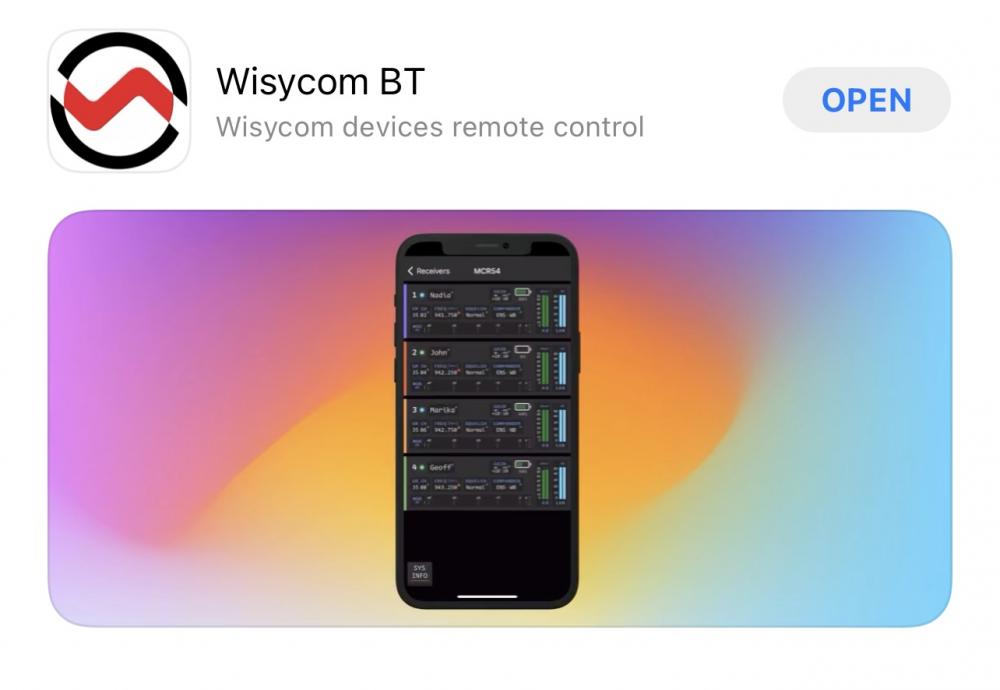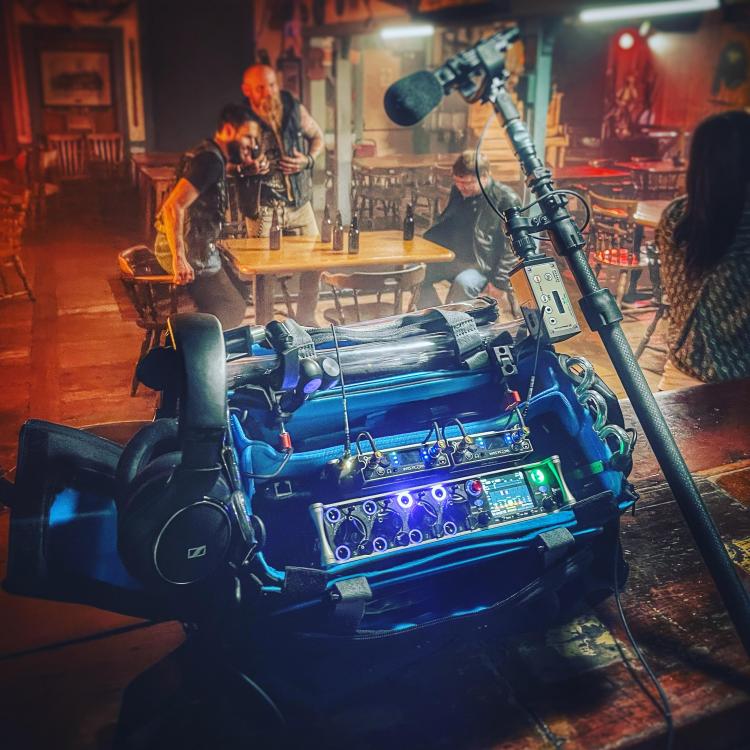
WaterlooNorm
-
Posts
17 -
Joined
-
Last visited
-
Days Won
2
Content Type
Forums
Gallery
Store
Posts posted by WaterlooNorm
-
-
Hi Marilo. Wisycom Rentals Canada has a YouTube video on how to use a little adapter to remote your MTP40/41/60 (not 62) antennas:
-
We record a lot of live event/conference productions and have gotten away with not genlocking cameras. That said, our switchers will frame sync all input/outputs and we typically record iso outputs from the switcher although we have also used the camera internal 4k files in post as well and timecode has been sufficient so far. Frame sync is needed between cameras and LED walls during live stage or volume vfx production.
-
@Bobs The Wisycom MPRLBP is a standard KLIC8000 battery. I've ordered half a dozen chargers from various online sources.
-
In typically keep a run of ISOs and the MIX tracks clean. I'll either set up one of the recorded busses with NR post-fade or route inputs to a second set of ISO tracks and apply NR there. Using the 888.
-
The linearly achieved by using extremely high-quality circuits is critical to good digital performance and carrier characteristics. Will be interesting to see how these compare.
-
Exact same issue with mine. Couldn't use the included spacers. Maybe someone will 3D print a solution. Following.
-
Send tone from the mixer. Should match input level on Tricaster.
-
Hello. Thought you all may be interested in my MTP60/PHA60 experience and would like to know if any others share some of this.
After waiting 8-months my PHA60 arrived. Immediately I was able to hear a considerable amount of interference and a constant, rapid ticking sound. The interference varied depending on bunch of factors, but primarily the MTP60 display coming on/dimming and going dark (standby). The ticking was always present. After considerable testing/recording and reporting to Wisycom, they very quickly replaced my PHA60.
Second PHA is absolutely silent except for the rapid ticking. After again reporting this to a seemingly baffled Wisycom, I posted to Reddit and the Facebook Wisy user group and almost immediately I received replies that the ticking is bluetooth related. Sure enough after turning bluetooth off on the MTP60 the ticking vanished.
I've extensively tested the MTP60/PHA60 against my MTB40 plug-on and they sound almost identical. The 60/60 combo using the ENS compander slightly edges out the MTB. Where things diverge is battery life and range.
Battery life using the little lithium pack is more than double the life of the MTB with Enaloop Pros at all power levels. Double also for distance with the 60/60 getting twice the range of the MTB connected to my 50/416 using a short XLR leed.
Of course the main differentiation for me in Canada is the ability to record and transmit at the same time. This is a fantastic option for the boom. I did a super lightweight "boom only" job using the 60's built in recorder and sent monitor audio wirelessly to my headphones and director from the 60.
No bag!
But no solution yet from Wisy (after three months) on the bluetooth issue. Shame really as it would be nice to be able to toggle recording/set gain etc from the app. But the boom is close at hand..
Anyone else experiencing 60/60 combo issues?
-
I'm not sure how I feel about putting all my wireless eggs into one basket. Although a very sexy basket.
-
Other than the display, many of those features are also available on tried-and-true Tentacles. I think it's just too soon to judge the reliability. The cost permits having a few extras as backup. Sets are brutal on gear.
-
Just started testing the new BT app for the 60. Ok, very early/first impression - holy crap!! Instantly paired with my MYP60s, individual control over almost every function! Best features:
- Name transmitter (talent name)
- watch level and set gain
- Turn TX power on/off
- Turn Rec on/off (change scene/takes as well)
- Mute/Unmute
- Global (all TX) Mute/Rec/Tx Pwr togglesSo far... impressed!
-
I highly recommend Simon at https://audio-workbench.com
-
-
On 12/31/2021 at 6:48 PM, Paul F said:
I hooked up three configurations and measured the output with a spectrum analyzer. Using an MKH 416 connected to an SKP 500 here are the results:
SKP 500 directly connected to the MKH 416, -51db
SKP 500 connected to a short stub (cable included with Rode windshield), -44db
SKP 500 connected to a boom's internal cable at about 48" length (graphite boom), -46db
Best results then is the short stub.
I didn't think of trying the internal cable stretched out.
That's very helpful - Thank you Paul!
-
20 hours ago, MartinTheMixer said:
Normy , I've seen your setup, a 100 meter cable is not short.
You must have the wrong Normy 😉
I'm using an 18" low-profile cabletechniques mounted with a rycote at the top of the boom.
19 hours ago, BAB414 said:No experience with Wisycom but lot's of real world experience with various generations of Lectrosonics plug on transmitters. I use a short jumper between the mic and the transmitter, which is attached to the pole with an ambient piece of hardware and I've made it through hundreds of different projects with no problem. As someone said above, just having the transmitter high above the obstructions does wonders for your reception. I've also on occasion seen the transmitter at the back end of an internally cabled pole (~18 feet) with the same great results.
Thank you. My setup is similar and not experienced any RF issues although I may not have been stressing the RF enough to notice a difference.
15 hours ago, Patrick Farrell said:Here's a quote from the lectro HM manual: "An antenna is formed between the housing and the attached microphone, operating much like a dipole type. At UHF frequencies the length of the housing is similar to 1/4 wavelength of the operating frequency, so the antenna is surprisingly efficient, which helps extend the operating range and suppress noise and interference."
That doesn't imply that wisycom operates the same way but it's possible they could. However, to say that using an xlr breaks the connection so you only have half a dipole shows that they don't understand how it actually works. There is still a ground connection through the xlr to the microphone which will load the opposing end of the antenna. In theory the length of the cable would affect the RF performance (just like the length of a mic would as well) but in practice you'll have RF trouble with your talent bodypack transmitters long before a plug-on transmitter mounted on a pole, provided the frequencies are clear.
Yes, I believe this is the same for the MTB but your explication helps clear this up.
-
Hello. I was recently informed by a highly respected professional that connecting my Wisycom MTB plug-on transmitter to a short XLR cable connected to my boom microphone violates the antenna design commonly used in most plug-on transmitter.
"First, I should state that this is the incorrect use of *ANY* plug-on device; no matter what the manufacturer. Plug-on transmitters employ dipole antennas where one of the antennas are in the transmitter itself, and the other is the microphone attached to the plug-on. Using an XLR cable between the two breaks the connection and so you have “half a dipole antenna”; you will not have great RF coverage."
I am interested in this group's perspective on topic this as I see this as a common practice.

.png.279748a58a2b862b7aa5f3b84126e232.png)


Cantar users - what are your plans?
in Equipment
Posted
Maybe too soon, too painful as the body is still warm.. but, what have you been considering for the future?